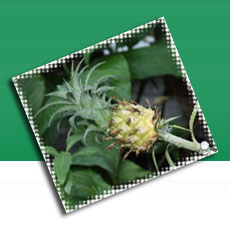PALAEOCARPOLOGICAL COLLECTIONS FROM THE PLEISTOCENE DEPOSITS OF BELARUS AND NEIGHBOURING TERRITORIES
FELIX VELICHKEVICH
Botanical Collections throughout the World edited by L. Stuchlik
/Proseeding of the Second International Conference on the Preparation of Botanical Collections.
- Crakow, 1998. - P.123-124.
Institute of Geological Sciences of the Academy of Belarus, Zhodinskaya 7, 220141 Minsk, Belarus
 The Pleistocene deposits of Belarus, the southern part of Lithuania, the western areas of Russia and the northern part of the Ukraine are very rich in profiles with fossil "seed" floras. More than 350 floras of different age from deposits of various origin and stratigraphical rank have beenidentified by the author in this vast region during the last 25 years. About 200 of the most complete and characteristic floras, mainly of the interglacial type, have been examined and used in this report.
The Pleistocene deposits of Belarus, the southern part of Lithuania, the western areas of Russia and the northern part of the Ukraine are very rich in profiles with fossil "seed" floras. More than 350 floras of different age from deposits of various origin and stratigraphical rank have beenidentified by the author in this vast region during the last 25 years. About 200 of the most complete and characteristic floras, mainly of the interglacial type, have been examined and used in this report.
There are five groups of interglacial floras in the Pleistocene of Belarus and neighbouring territories (Korchevian, Byelovyezhian, Mogilyevian, Alyeksandrian and Muravian). Moreover many interstadial and fragmental floras of different age are represented in the palaeo-carpological collections of the Palaeobotanical Museum of Minsk. Interglacial floras of the so-called "Belarussian type" are the most typical for the entire ancient glaciation province of the East European platform.
The number of taxa in the Pleistocene floras of Belarus and neighbouring territories varies from 20-30 to 110-130, but the most typical collections contain 30-70. The number of interglacial floras increases uniformly from the older to the younger Interglacials. The most numerous fossil floras belong to the last (Muravian) Interglacial. Almost half of them contain abundant seeds of Brasenia (different extinct species) and other exotic species of the "Brasenia-complex" (Figs 1, 2).

124
A large group of extinct species from the most evolutionary plastic genera of wetland macrophytes (Caulinia, Potamogeton, Brasen-ia, Aldrovanda, Stratiotes, Myriophyllum, etc. ) has been described from fossil seeds, fruits and megaspores from deposits of the more ancient Interglacials of Belarus. Some of these taxa are transitional ones from the Late Pliocene to the Pleistocene, the other species were identyfied in the floras of several Interglacials, or only within one of them. This confirms the author's conception about the profound transforming influence of the Pleistocene glaciations on the flora and vegetation of the Northern Hemisphere ancient ice province, which promoted the evolutionary processes in the Pleistocene flora and resulted in the appearance of a large number of new small taxa (Velichkevich, 1994).


 The Pleistocene deposits of Belarus, the southern part of Lithuania, the western areas of Russia and the northern part of the Ukraine are very rich in profiles with fossil "seed" floras. More than 350 floras of different age from deposits of various origin and stratigraphical rank have beenidentified by the author in this vast region during the last 25 years. About 200 of the most complete and characteristic floras, mainly of the interglacial type, have been examined and used in this report.
The Pleistocene deposits of Belarus, the southern part of Lithuania, the western areas of Russia and the northern part of the Ukraine are very rich in profiles with fossil "seed" floras. More than 350 floras of different age from deposits of various origin and stratigraphical rank have beenidentified by the author in this vast region during the last 25 years. About 200 of the most complete and characteristic floras, mainly of the interglacial type, have been examined and used in this report.
